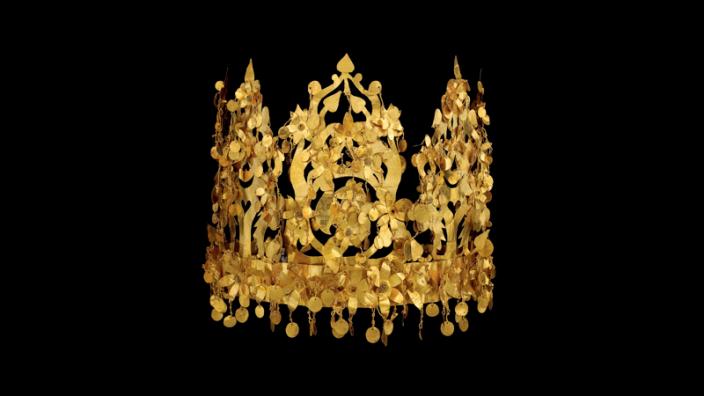
Gold Crown
National Treasure #338
Silla Kingdom, 5th-6th century AD
Gyeongju, Korea
Like NT #188 (earlier page), this NT #338 (left photo) has four crosspieces, instead of three, on its central ("tree") upright. It was discovered in the Geumnyeongchong tumulus. Unlike most Silla crowns, NT #338 does not have any jade gogok ornaments.
The origins of these beautiful Korean crowns can be traced all the way back, rather amazingly, to nomadic crowns from the first century AD, that have been discovered upon the plains of Afghanistan (lower photo).



